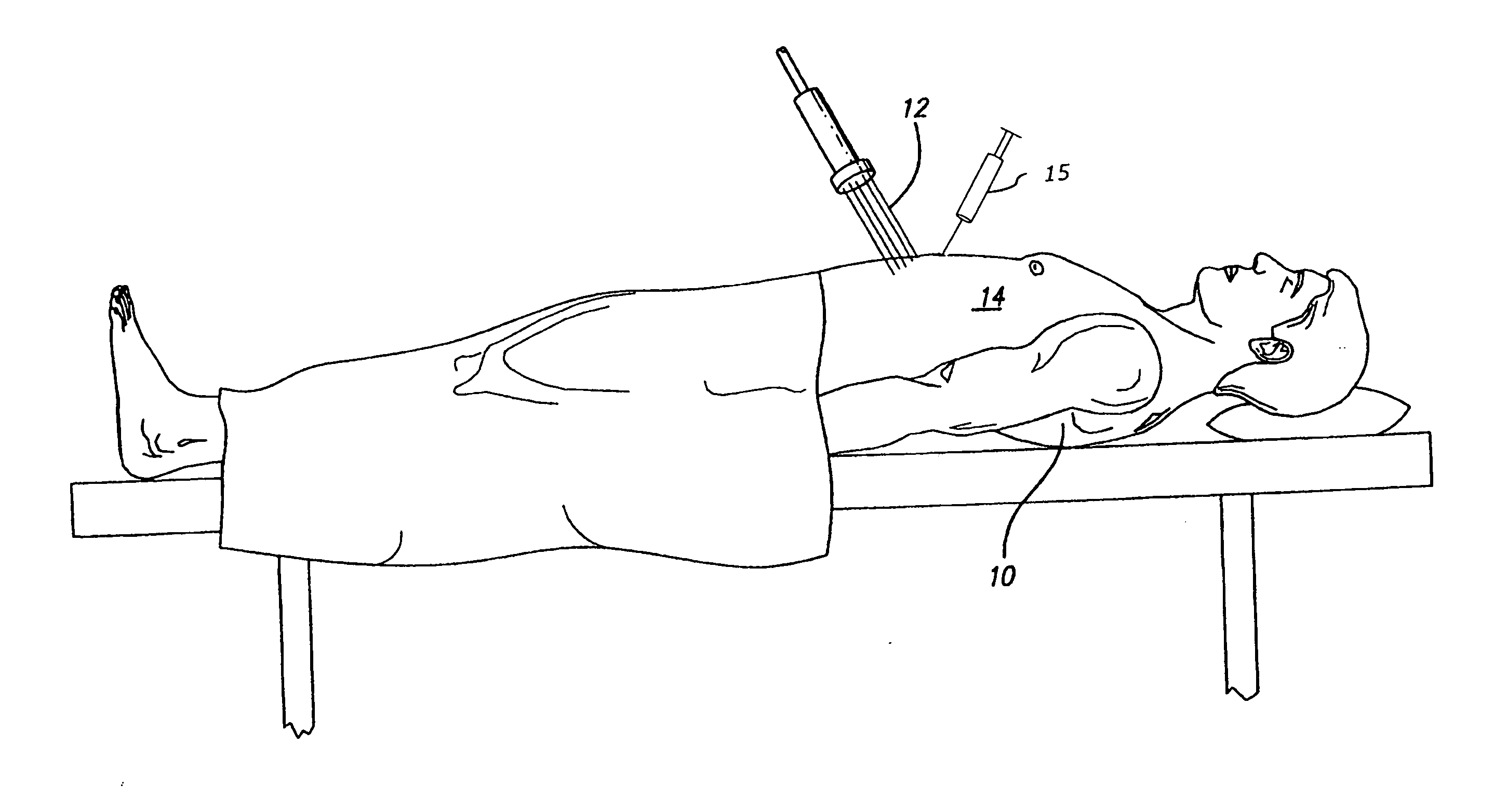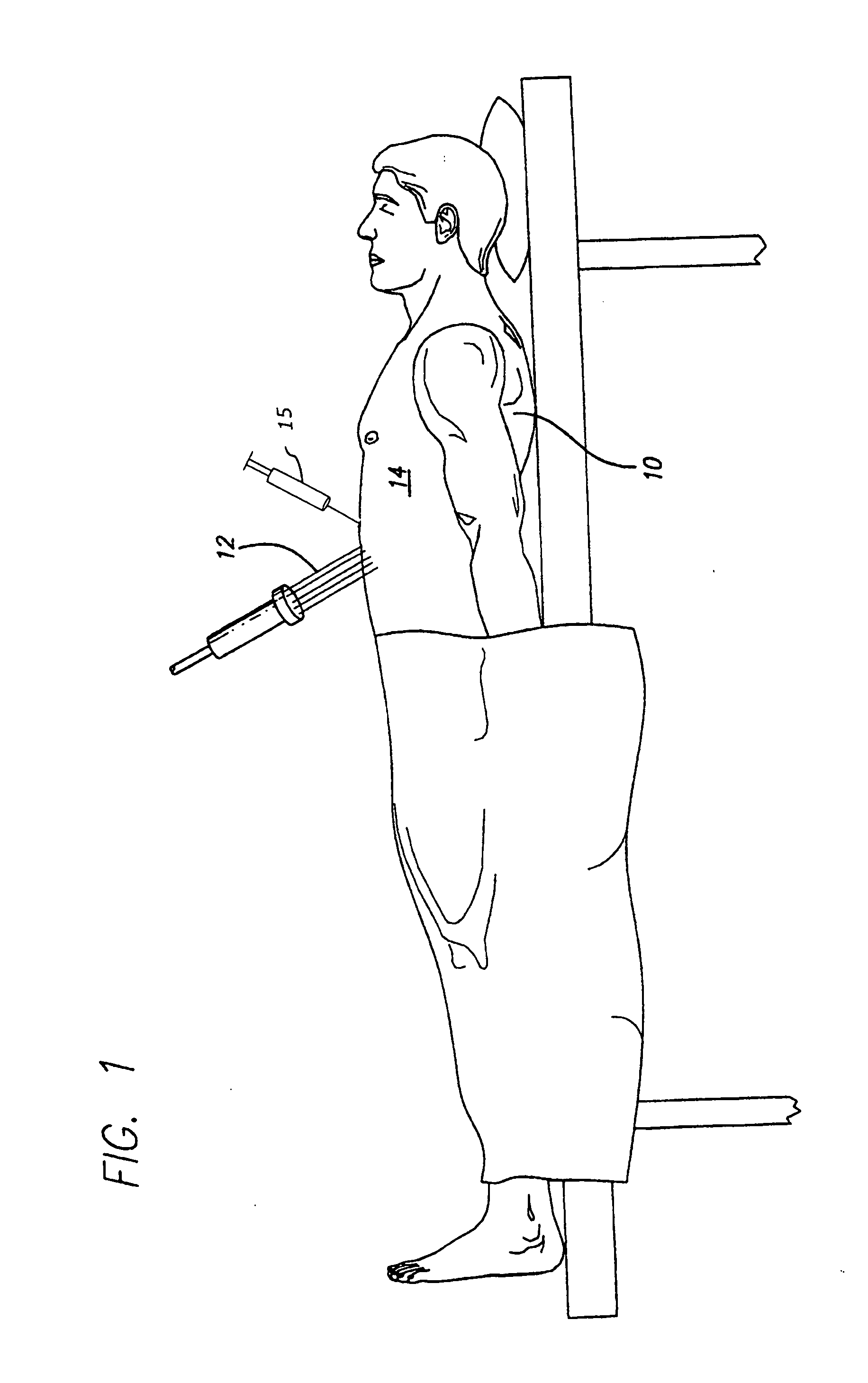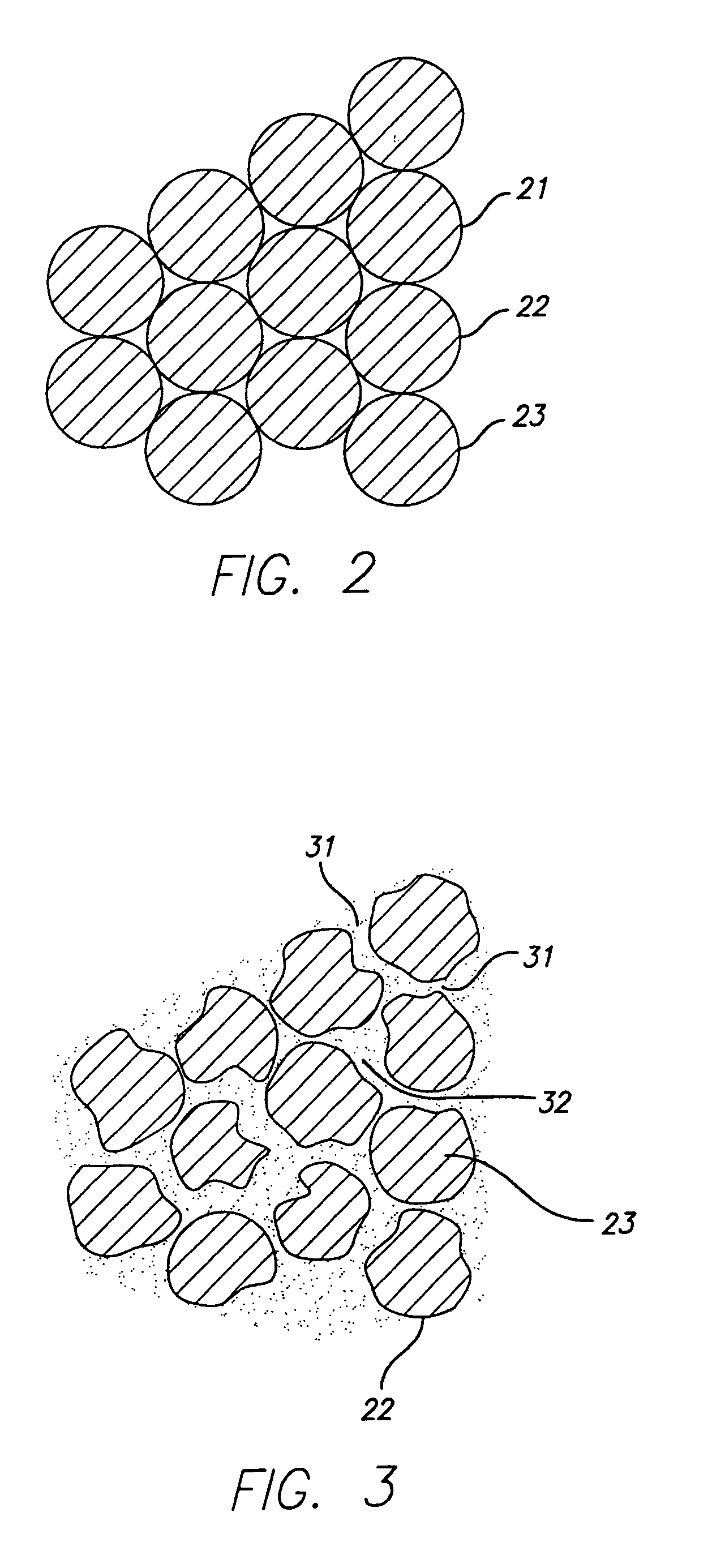Noninvasive method for site-specific fat reduction with catalyst
a catalyst and site-specific technology, applied in the field of non-invasive, can solve the problems of long post-procedure recovery period, high risk of side effects, and high risk of surgery, and achieve the effect of reducing fa
- Summary
- Abstract
- Description
- Claims
- Application Information
AI Technical Summary
Benefits of technology
Problems solved by technology
Method used
Image
Examples
example 1
[0027]The targeted area for fat reduction is the patient's abdomen. The patient is treated with injections totaling 5 cc of sterile water. The sterile water is administered to the patient via seven injections for the treatment area: 6 injections of 0.8 cc and 1 injection of 0.2 cc. Injections are given with a ½ inch 27 gauge needle at a depth of about 1 cm and are spaced approximately 2 cm apart to span an area of approximately 80 cm2. The patient's abdomen is then treated with laser energy, using a 635 nm semiconductor diode laser with maximum power of 10 mW. The laser energy is applied for 12 minutes in a back-and-forth sweeping motion across the targeted fat areas without touching the patient.
example 2
[0028]The targeted area for fat reduction is the patient's abdomen. The patient is treated with a 0.9% w / v NaCl solution. The patient is treated with injections totaling 5 cc of the solution. The solution is administered to the patient via seven injections for the treatment area: 6 injections of 0.8 cc and 1 injection of 0.2 cc. Injections are given with a ½ inch 27 gauge needle at a depth of about 1 cm and are spaced approximately 2 cm apart to span an area of approximately 80 cm2. The patient's abdomen is then treated with laser energy, using a 635 nm semiconductor diode laser with maximum power of 10 mW. The laser energy is applied for 12 minutes in a back-and-forth sweeping motion across the targeted fat areas without touching the patient.
example 3
[0029]The targeted area for fat reduction is the patient's abdomen. A 635 nm semiconductor diode laser with maximum power of 10 to 20 mW is used to apply laser light to the targeted area. The laser energy is applied for 12-15 minutes in a back-and-forth sweeping motion across the targeted fat area without touching the patient. The patient is then treated with injections totaling 5 cc of sterile water. The solution is administered to the patient via seven injections for the treatment area: 6 injections of 0.8 cc and 1 injection of 0.2 cc. Injections are given with a ½ inch 27 gauge needle at a depth of about 1 cm and are spaced approximately 2 cm apart to span an area of approximately 80 cm2. This method is repeated four times, spaced about a week apart, over a four week period.
PUM
 Login to View More
Login to View More Abstract
Description
Claims
Application Information
 Login to View More
Login to View More - R&D
- Intellectual Property
- Life Sciences
- Materials
- Tech Scout
- Unparalleled Data Quality
- Higher Quality Content
- 60% Fewer Hallucinations
Browse by: Latest US Patents, China's latest patents, Technical Efficacy Thesaurus, Application Domain, Technology Topic, Popular Technical Reports.
© 2025 PatSnap. All rights reserved.Legal|Privacy policy|Modern Slavery Act Transparency Statement|Sitemap|About US| Contact US: help@patsnap.com



